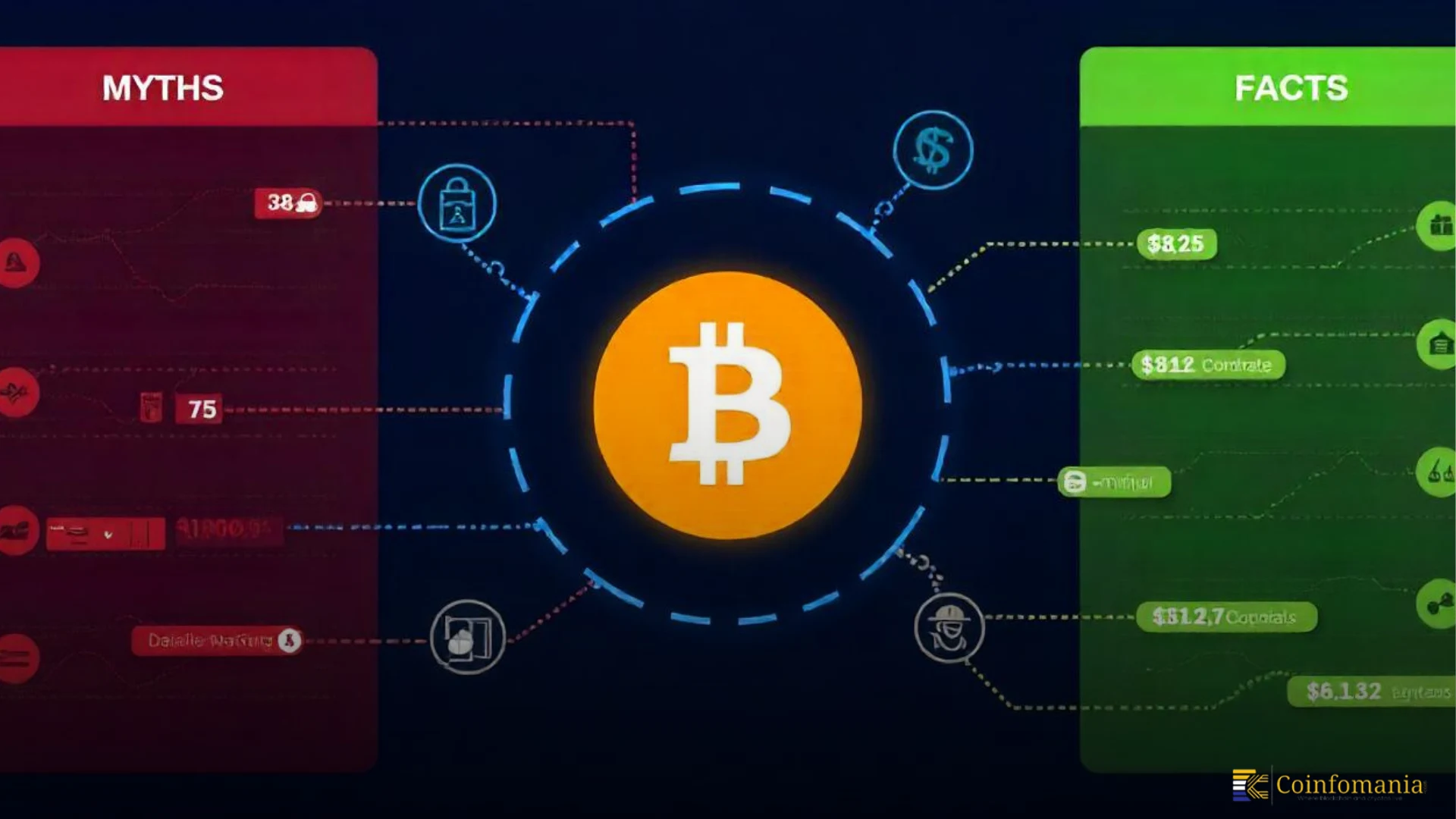7 Bitcoin Myths That Still Fool the Public — What’s Fact vs. Fiction in 2025?
0
0

Is Bitcoin anonymity true? Does BTC lack real value or security? Despite its growing impact, long-standing myths like these continue to shape perceptions of Bitcoin. While institutional players increasingly adopt BTC, these fundamental misunderstandings harm public perception. This article addresses seven such myths, separating facts about Bitcoin’s operation and potential from misinformation hiding its reality.
1. Bitcoin Anonymity Is Real
A frequent misconception is that Bitcoin users operate with complete anonymity. In truth, this digital currency provides pseudonymity; transactions are linked to addresses, not direct personal identities. However, every transaction becomes a public record on the blockchain. This enables anyone to trace a Bitcoin’s history. Block explorers and other tools can audit and verify transactions, offering transparency that is rare in traditional financial systems. While user identities remain hidden, the system itself is far from private.
2. BTC Has No Backing or Value
Critics often claim that BTC lacks inherent value because there is no physical commodity backing it. However, similar to fiat currencies, BTC value comes from user trust and demand. What distinguishes it is its fixed supply limit of 21 million coins, which protects it against inflation. Many traditional currencies do not offer such a safeguard. Bitcoin’s value arises from scarcity, decentralized design, and use as a store of value and medium of exchange. This is why its price has surged significantly over the years, as seen in chart 1, despite the skeptics’ doubts.
Chart 1 – Published on CoinGecko, April 9, 2025.
3. The Bitcoin Blockchain Is Insecure
Some see the open nature of Bitcoin’s blockchain as a weakness. However, this transparency strengthens the network considerably. A decentralized network involving millions of global miners and nodes effectively secures BTC. An attacker would need over 51% control of network computing power to manipulate the blockchain, which is practically impossible given the scale and worldwide distribution of participants.
4. Bitcoin Is Unregulated and Unsupported by Governments
The belief that Bitcoin regulation does not exist is incorrect because governments increasingly recognize and regulate it. In the United States, federal and state laws now apply to Bitcoin transactions and related businesses. Regulatory agencies impose compliance standards similar to those for traditional financial institutions. Furthermore, the U.S. government has engaged with BTC, even auctioning seized holdings. This clearly shows the cryptocurrency’s growing role within the economy.
5. BTC Is Too Complex for the Average Person
The idea that Bitcoin is excessively technical and hard to access is outdated. Open-source development and educational efforts make understanding how BTC works much simpler. Satoshi Nakamoto’s white paper and blockchain data are publicly available for anyone to review or contribute. Setting up a wallet today takes only minutes, and users can simply buy fractions of a Bitcoin. These units, called satoshis, enhance accessibility for all economic backgrounds.
6. Bitcoin Serves No Practical Purpose
Skeptics claim that BTC offers limited real-world use, but its applications are rapidly expanding. Beyond its role as a decentralized currency, Bitcoin provides a secure, tamper-proof database for various uses. Its function in long-term investments, direct peer-to-peer payments, and loan collateralization demonstrates growing flexibility. Many merchants and service providers now accept BTC, transforming it from a speculative asset to a practical financial tool.
7. Bitcoin Won’t Fit Into the Financial System
Some critics doubt that Bitcoin can be integrated into traditional finance, but current trends suggest otherwise. Bitcoin regulation means it is now widely treated as a regulated asset class with tax codes and reporting requirements. Retirement accounts accept it, investment funds support it, and it even has financial products like ETFs and futures. The integration of Bitcoin and established finance appears less a question of possibility than one of scope and extent.
Looking Ahead: Bitcoin Beyond the Myths
Our understanding must evolve alongside Bitcoin’s continued development. These seven myths have long prevented broader acceptance and meaningful discussions about BTC. However, advancements in Bitcoin regulation, tech, and finance signal a new era for this digital currency. Distinguishing facts from falsehoods allows individuals and institutions to better assess BTC value and risks. This clarity might help shape the next stage of financial innovation.
The post 7 Bitcoin Myths That Still Fool the Public — What’s Fact vs. Fiction in 2025? appeared first on Coinfomania.
0
0
 Manage all your crypto, NFT and DeFi from one place
Manage all your crypto, NFT and DeFi from one placeSecurely connect the portfolio you’re using to start.






